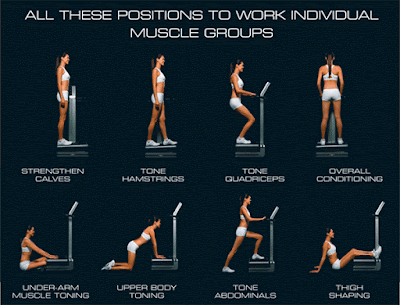Efficient and Effective Workouts
The website www.vibrationtraining.org claims the training method traces its’ roots back about 40 years to Russian cosmonauts. Scientists of the Soviet Space Program discovered that lack of gravity caused cosmonauts to experience significant losses in bone density and muscle mass. Russian scientists began incorporating vibration technology into their cosmonauts training and tracked an increase in bone density and muscle strength. After the success Russians experienced with the cosmonauts, Russian coaches began introducing vibration technology into the training regimens of various athletes and ballet dancers. After the fall of communism in the Soviet Union, NASA learned of vibration training and assimilated into astronaut training.
What is Vibration training?
Vibration training involves a machine with a platform that vibrates between 25 and 50 times per second in three directions. The three directions cause instability that activates both voluntary and involuntary muscles. As the platform vibrates, the vibrations transfer to the muscles in contact with the platform. These muscles activate at the same speed as the platform enabling the muscles to recruit up to 95 percent of muscle fibers, compared to conventional resistance training which only recruits approximately 40 to 60 percent of muscle fibers. Physical conditioning improves by using vertical vibrations and various movements and exercises.
Strength and Conditioning Benefits
According to a recent article posted on www.sportsinjurybulletin.com, many athletes began integrating vibration training into workouts, as it enhances conventional strength and plyometrics training methods. It can also help with speed recovery and regeneration times. Athletes, coaches, and therapists using vibration training include the following.
- Nike Oregon Project
- RBS Six Nations Tournament
Health Benefits
As researchers continues: fits of vibration training, the commercial market became interested in adding vibration training to their workout routines. Pilates studios and health clubs offer vibration training in the form of 30-minute personal training sessions and group exercise classes. Power Plate (whole vibration machine manufacturer) finds many individuals prefer vibration training to other forms of training as a 30-minute session is the equivalent of a 90-minute workout. Further, there is little impact on joints and ligaments. The health benefits of vibration training are as follows.
- Health and Safety Considerations Vibration training is safe for most individuals; however, individuals should always check with their physician before beginning any exercise program, including vibration training. Experts advise pregnant women and those with low-back pain not to use vibration training. Further safety considerations include overuse, improper poses/exercises, and frequencies that are too high. Vibration training is offered at some Pilates studios, vibration training studios, fitness centers, rehabilitation clinics; individuals also may train at home. For more information on vibration training and whole body vibration machines, please visit the American Vibration Fitness Trainers Association at www.avfta.com.

